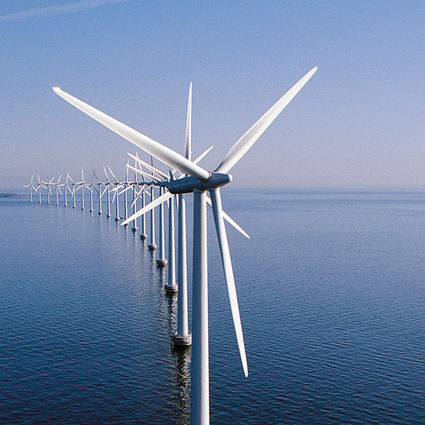Texas Gulf Coast is prime for offshore wind turbines
Last updated 6/12/2013 at Noon
In the race to establish the country’s first offshore wind farm, the University of Maine’s Advanced Structures and Composite Center drifted across the finish line recently, when it launched a small, floating-platform research wind turbine off the coast of Castine, Maine. The Center hopes to connect a full-size turbine to their power grid by 2016, NPR’s web site StateImpac reports.
In Texas, however, where steady winds and a gently sloped shoreline could make for ideal conditions to harvest wind, offshore wind is racing to catch up.
Offshore wind farms are typically more efficient than their onshore counterparts because there’s fewer physical obstructions and a more predictably consistent flow of wind. But critics of offshore wind cite potential problems, like impacts on wildlife and scenery. Then there’s the hefty price tag: offshore turbines can be twice as expensive to build as onshore ones.
The Texas Gulf Coast was at one point thought to be the best candidate for the country’s first offshore wind farm, but efforts by companies such as Coastal Point Energy and Baryonyx have yet to launch. But that might change in the next few years.
Off the coast of Texas, a consortium of universities, energy companies and manufacturers have come together to bring offshore wind farms to the Gulf Coast. The Department of Energy (DOE) is partially funding the design of several offshore wind energy projects over this next year, including the Texas Gulf Offshore Wind Project (GoWind), which plans to install three turbines in the Gulf.
GoWind is composed of research teams from several Texas universities, as well as companies like Baryonyx, and turbine and platform manufacturers. In addition to federal funding, the group has contributed between $20 to $25 million of their own money to the project.
John Pappas, director of the Texas A&M Wind Energy Center, is one of the project’s leaders. He thinks that the GoWind project will succeed because of the Gulf’s inherent advantages, like its long history of offshore oil drilling.
“What’s good about the Gulf of Mexico, first and foremost, is that we have the infrastructure and the people who know how to work offshore,” Pappas said. “In some other places, they don’t have the infrastructure necessary to bring [turbines] offshore and construct them.”
Though offshore turbines are relatively common in other parts of the world (especially the United Kingdom and Scandinavia), this is not yet the case in the states. Some promising plans, such as the Cape Wind Project in Massachusetts, have stalled due to bureaucratic gridlock and vocal opposition.












Reader Comments(0)